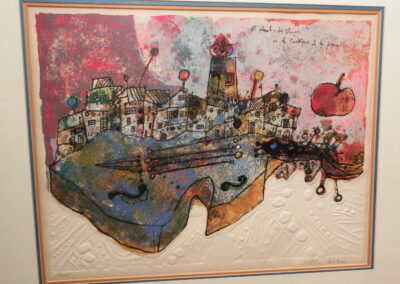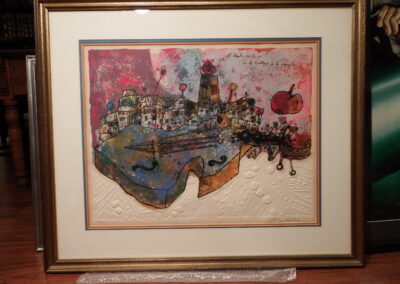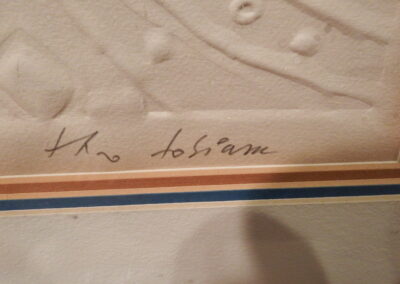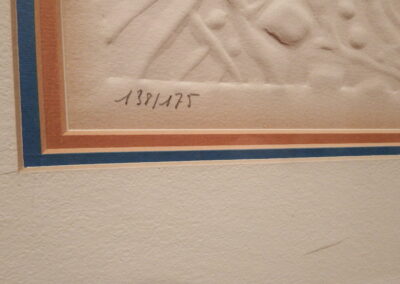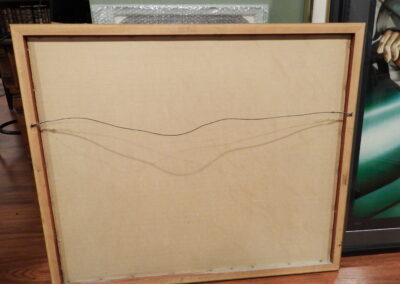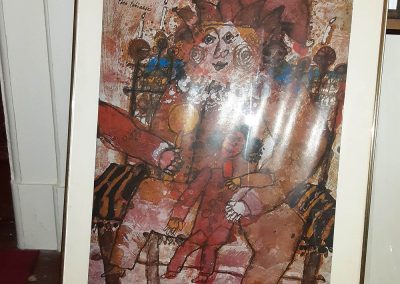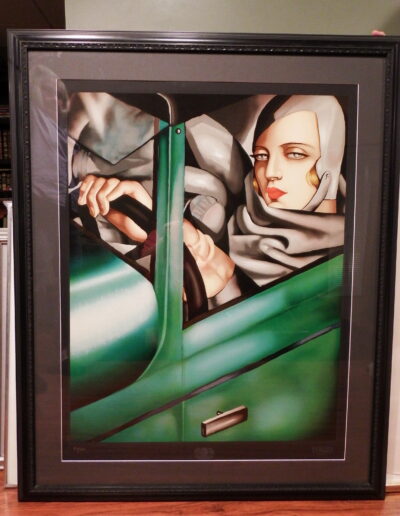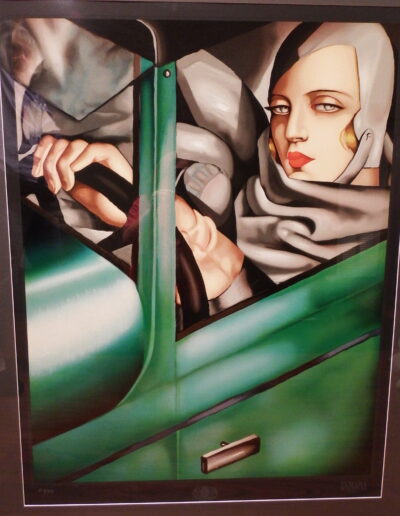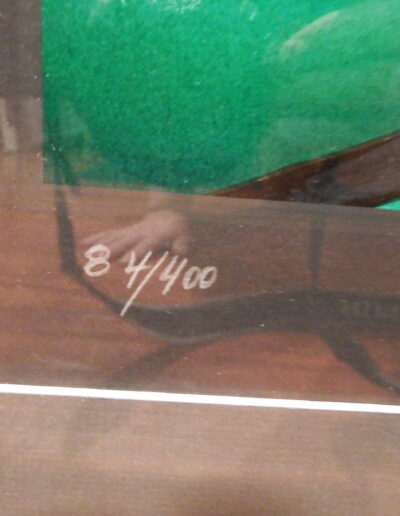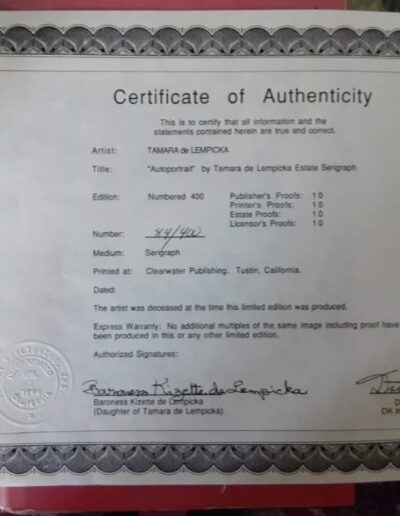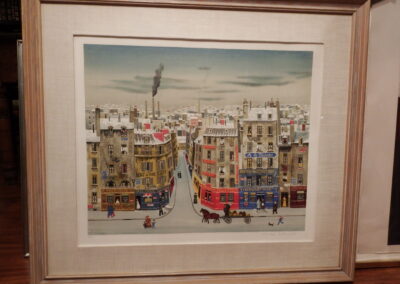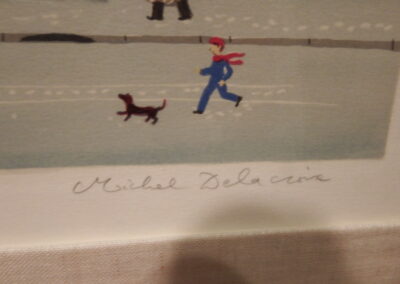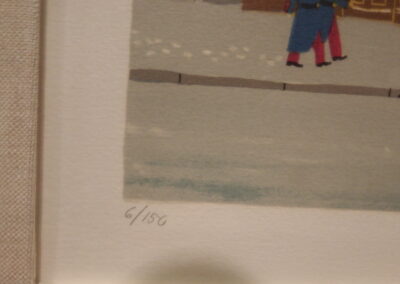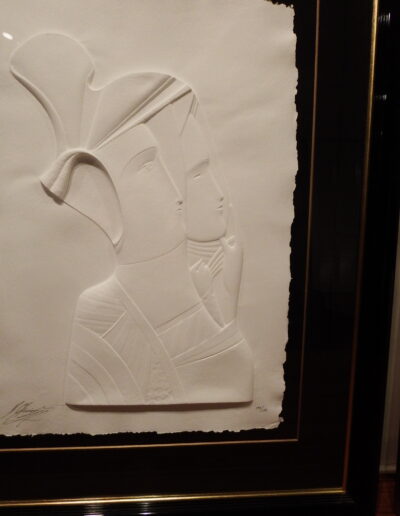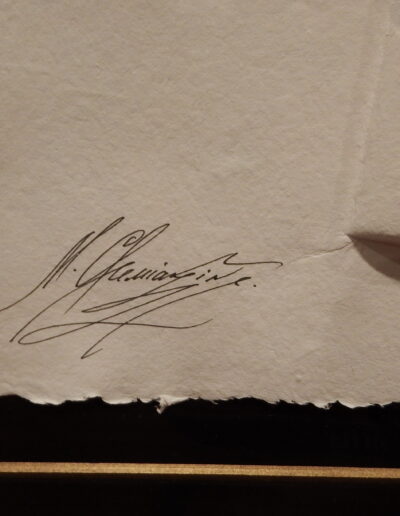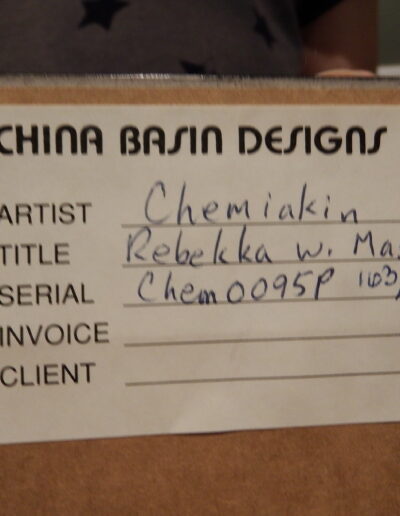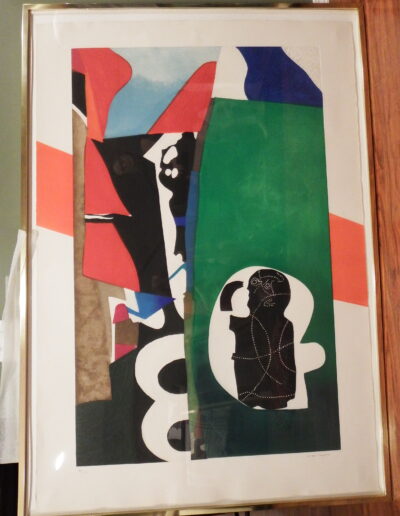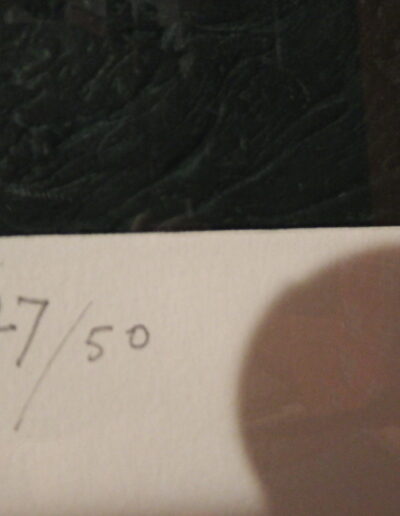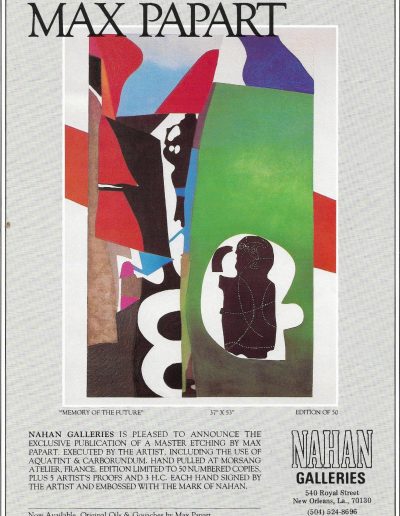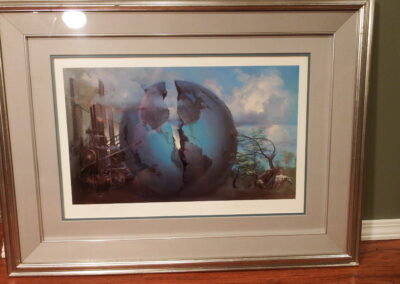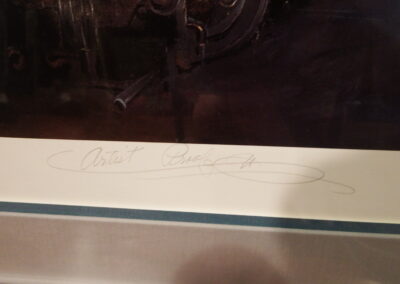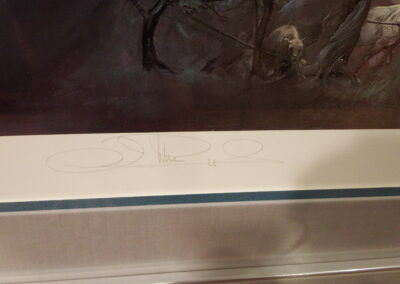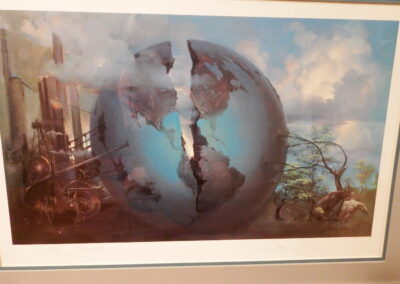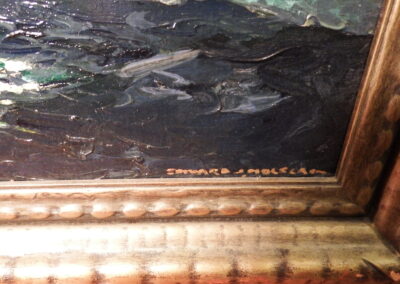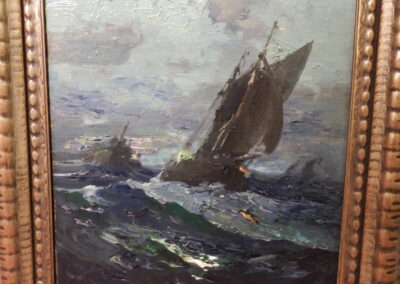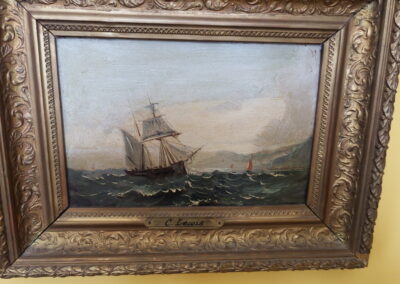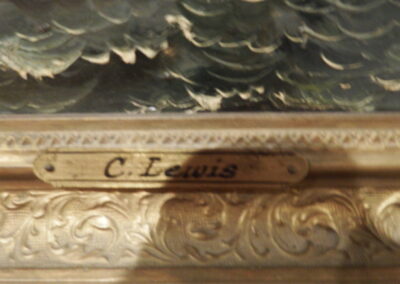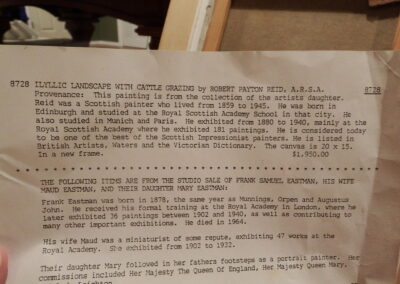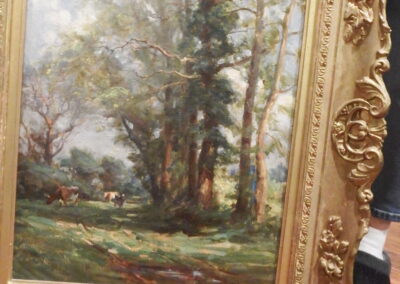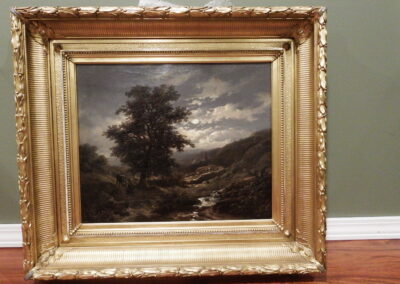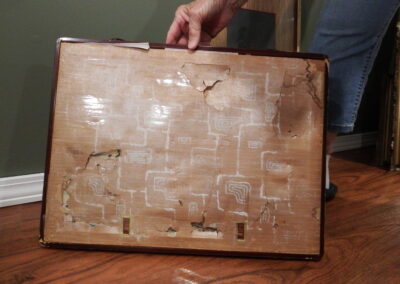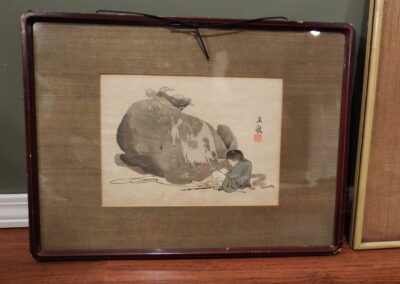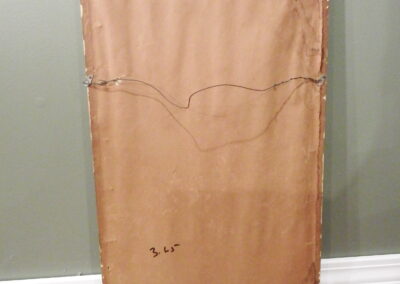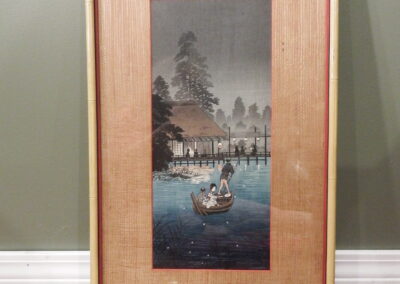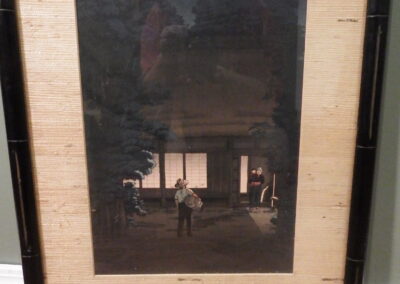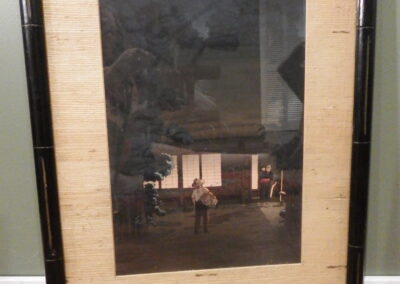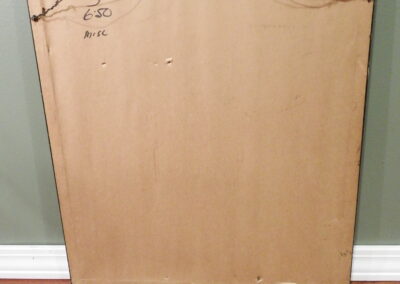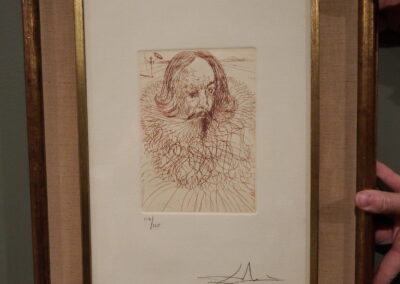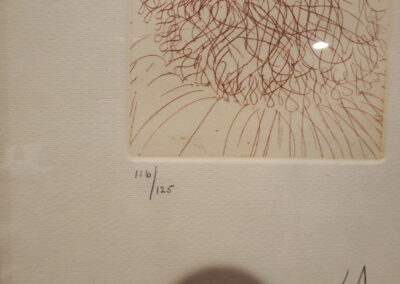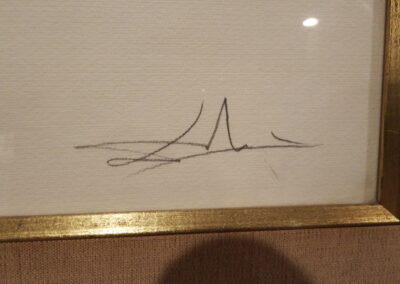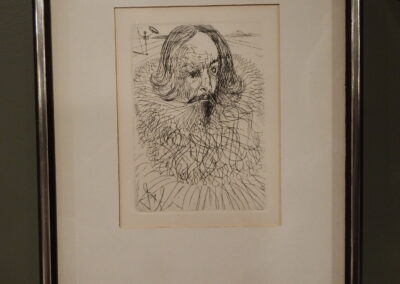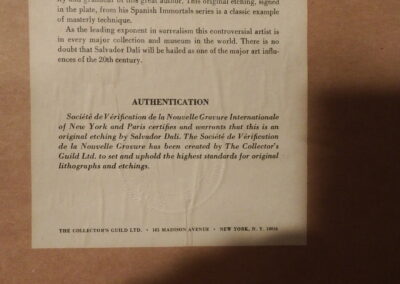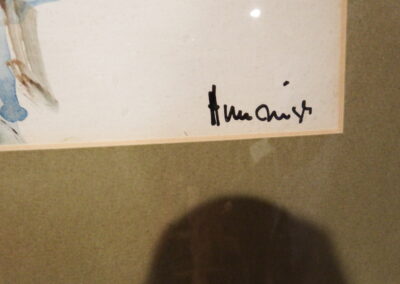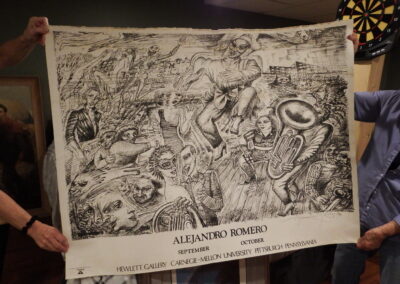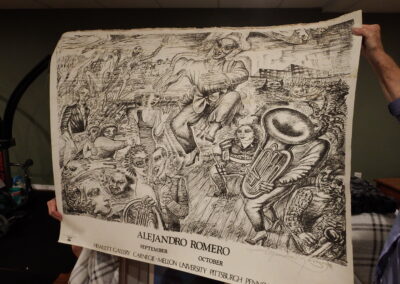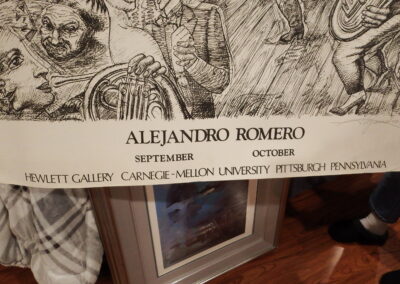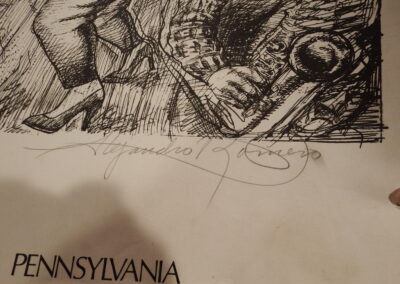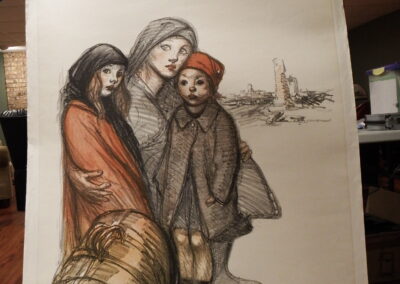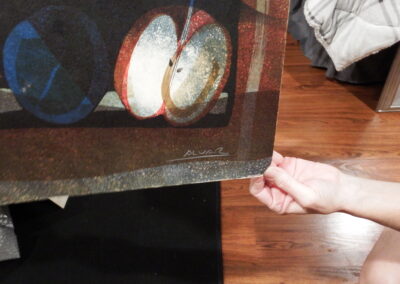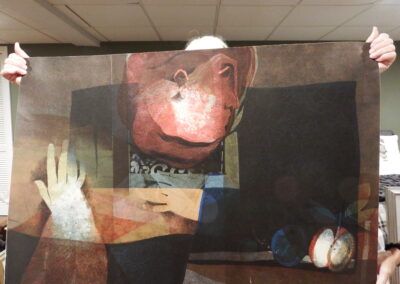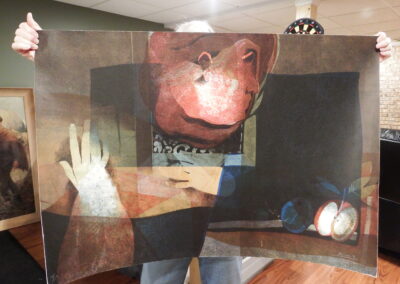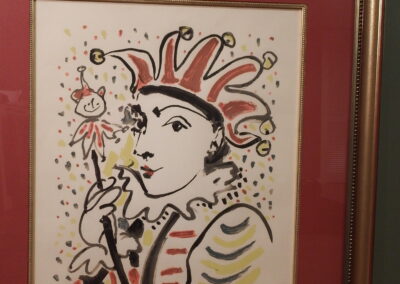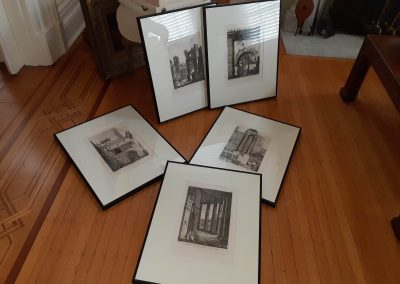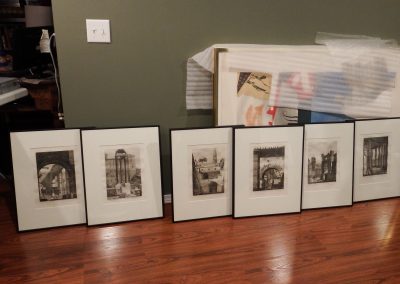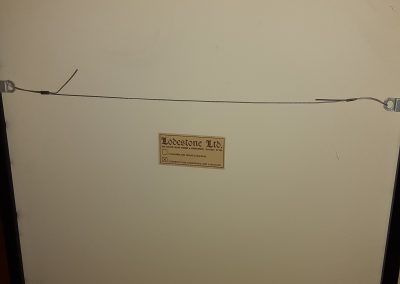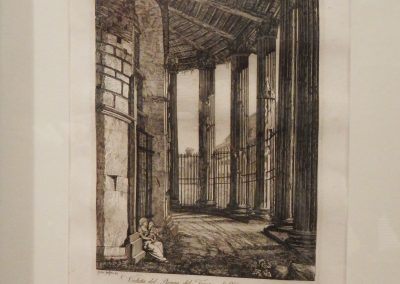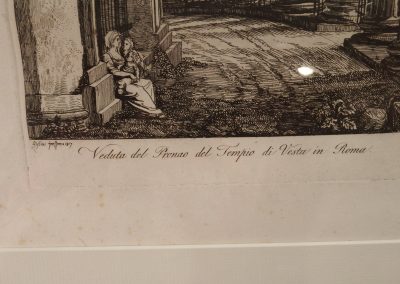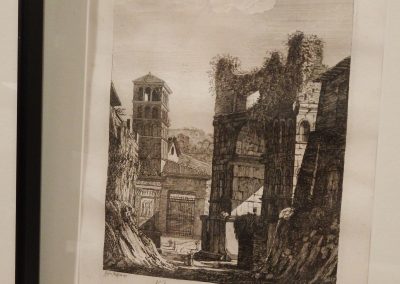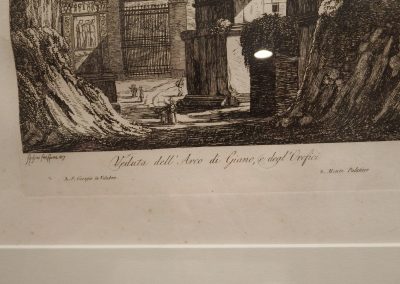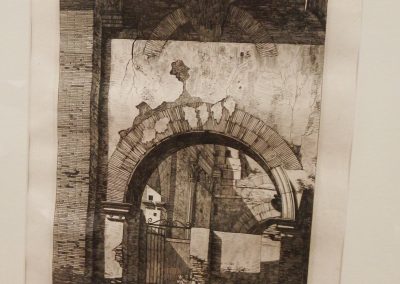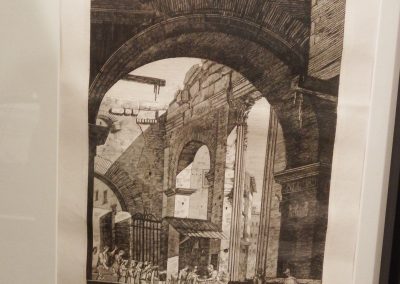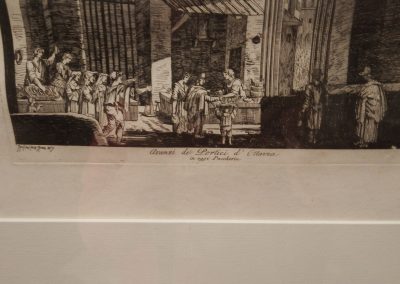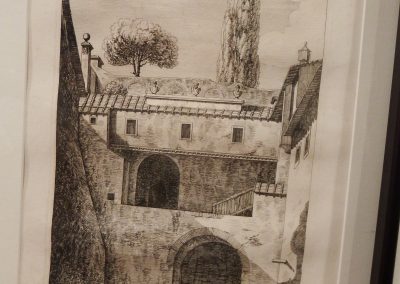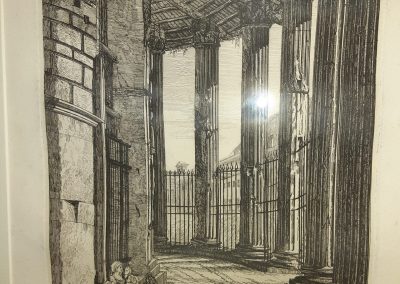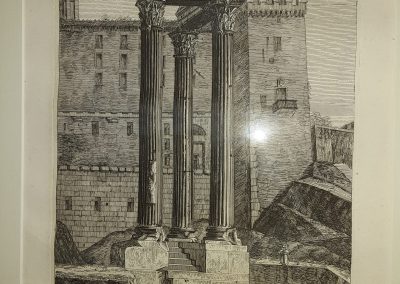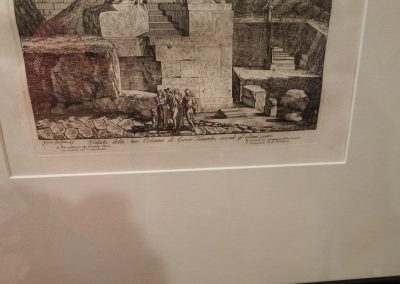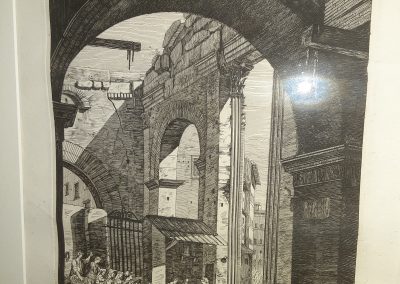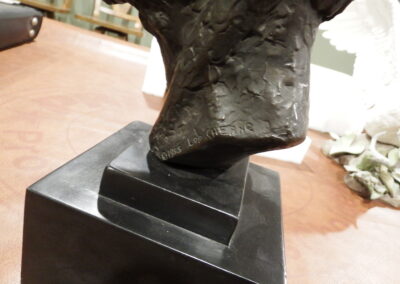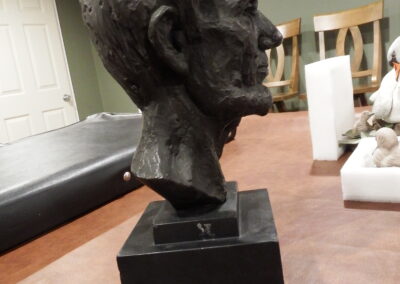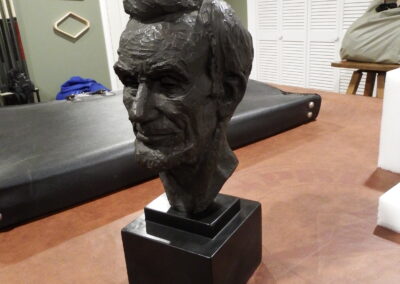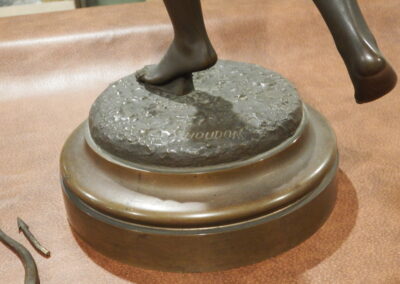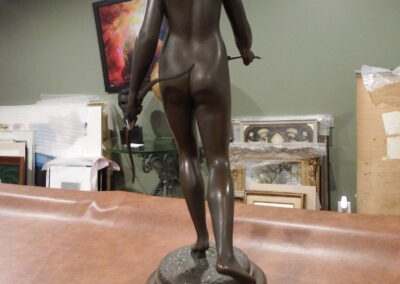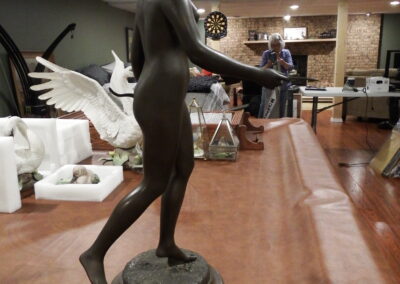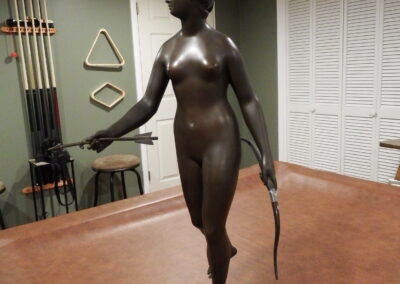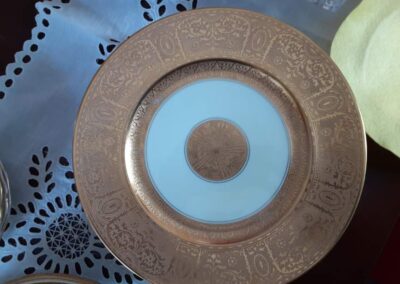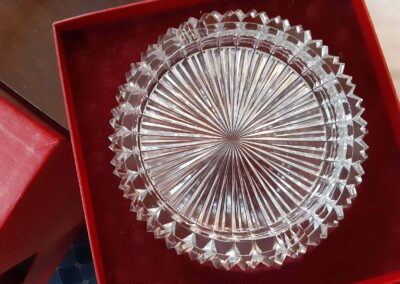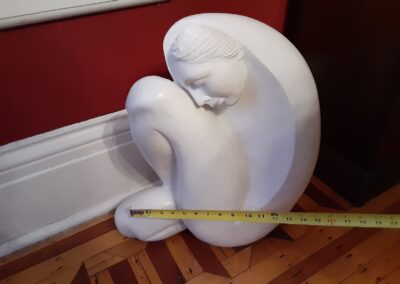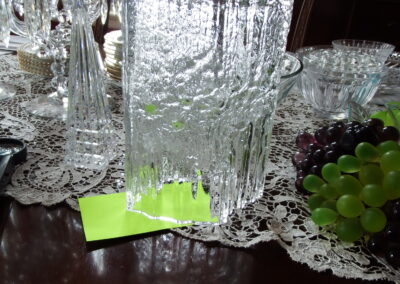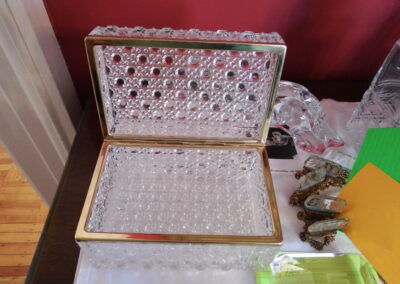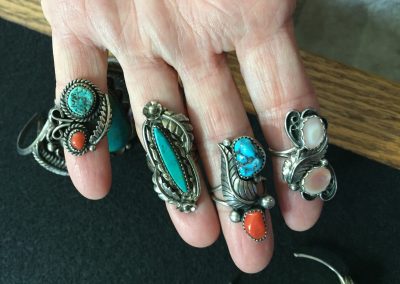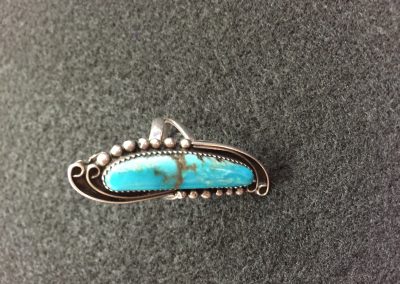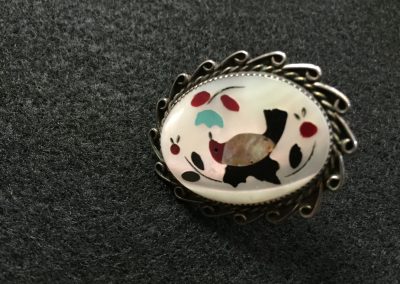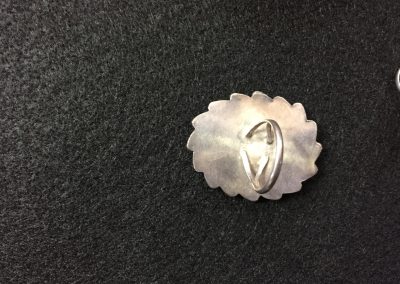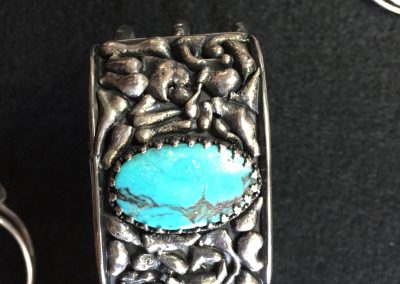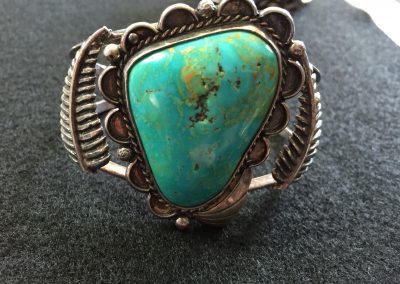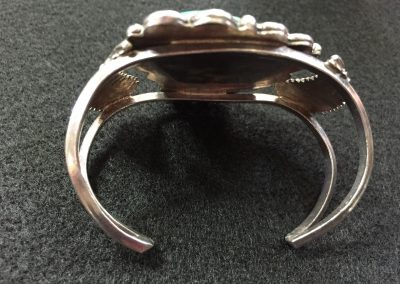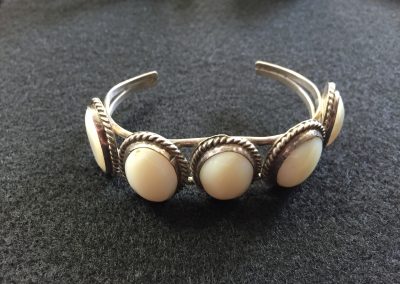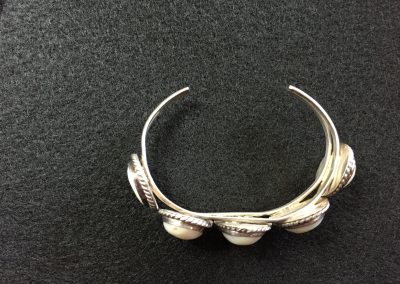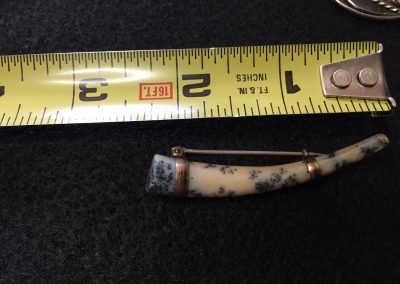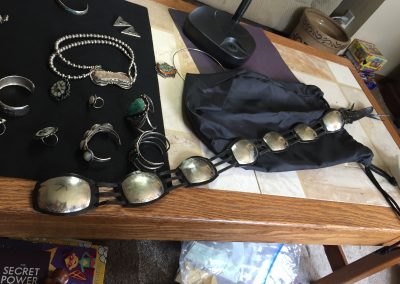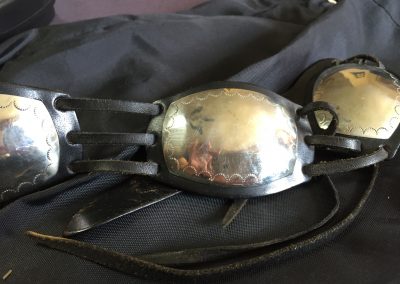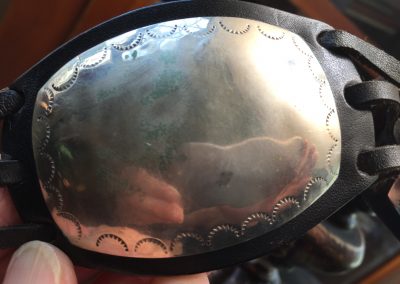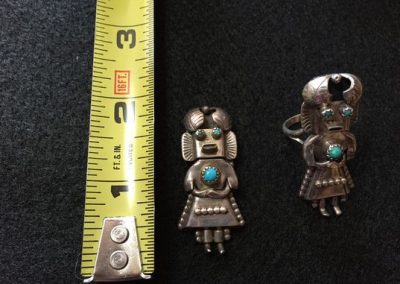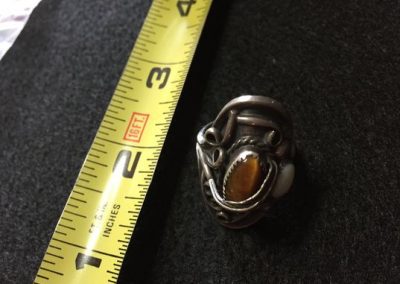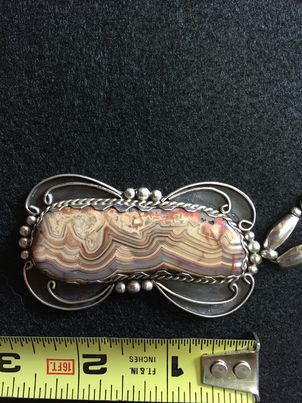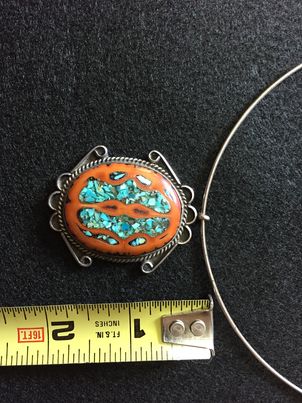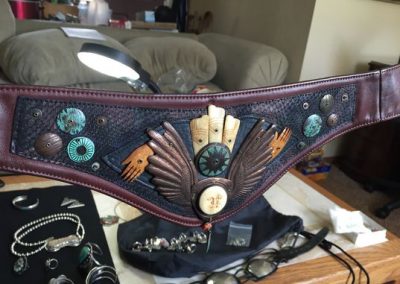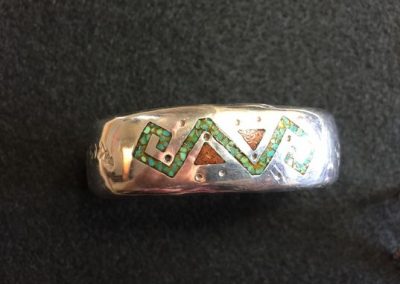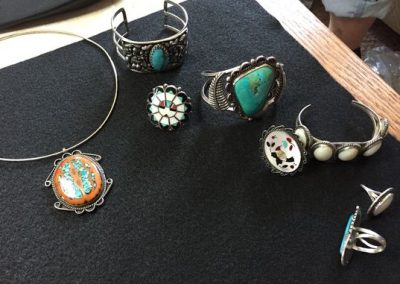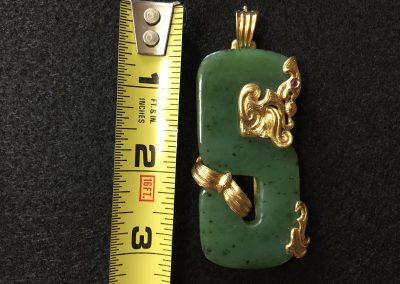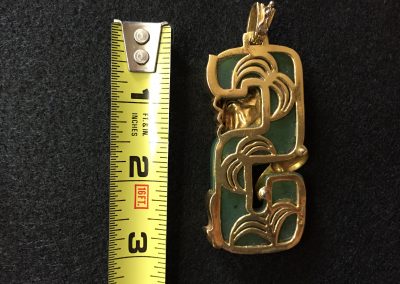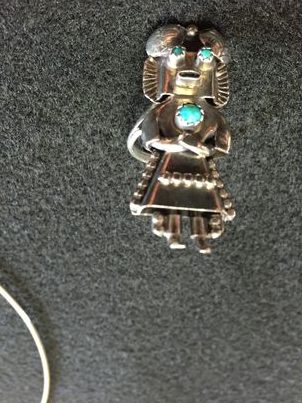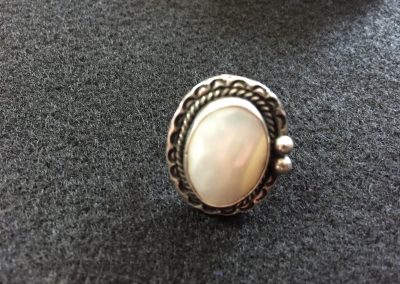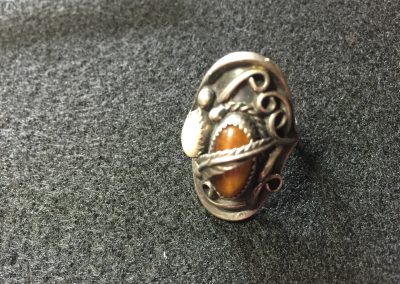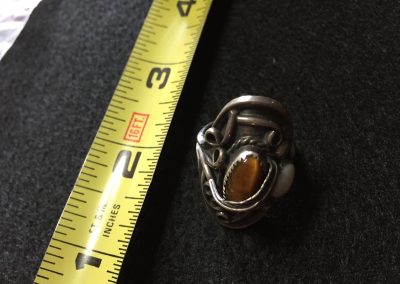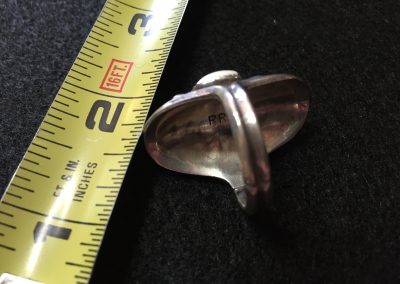Artwork & Other Items
Email: tgray@austinwebdesign.com
#1 Artist: Theo Tobiasse (France 1927-2012)
St. Paul De Vince Embossed Lithograph – Signed & Numbered 138/175
21” x 27” / with frame 37” x 21.5”
SOLD
View Artist Bio
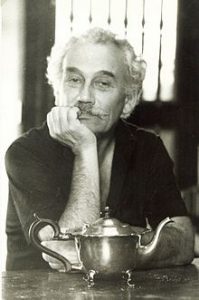 Théo Tobiasse was a French artist best known for his Expressionist paintings and prints. Portraying women, men, and symbolic iconography with loose brushstrokes and rich colors, Tobiasse’s work evokes a Judeo-Christian mysticism akin to renowned French-Russian painter Marc Chagall. Born on April 26, 1927 in Jaffa, Mandatory Palestine (currently Israel) to Lithuanian immigrant parents, he and his family moved to Paris in 1931. Tobiasse spent his adolescence studying at the National School of Decorative Arts while avoiding Nazi forces during World War II. Following the liberation of Paris, he began his career as a designer, creating tapestries, stage sets, and window decorations for the company Hermès. He went on to achieve international attention and critical acclaim, garnering awards such as the Dorothy Gould Prize in 1961. In the 1970s, a visit to Jerusalem inspired him to create a stained-glass work for the Jewish Community Center in Nice. The artist died on November 3, 2012 in Cagnes-sur-Mer, France.
Théo Tobiasse was a French artist best known for his Expressionist paintings and prints. Portraying women, men, and symbolic iconography with loose brushstrokes and rich colors, Tobiasse’s work evokes a Judeo-Christian mysticism akin to renowned French-Russian painter Marc Chagall. Born on April 26, 1927 in Jaffa, Mandatory Palestine (currently Israel) to Lithuanian immigrant parents, he and his family moved to Paris in 1931. Tobiasse spent his adolescence studying at the National School of Decorative Arts while avoiding Nazi forces during World War II. Following the liberation of Paris, he began his career as a designer, creating tapestries, stage sets, and window decorations for the company Hermès. He went on to achieve international attention and critical acclaim, garnering awards such as the Dorothy Gould Prize in 1961. In the 1970s, a visit to Jerusalem inspired him to create a stained-glass work for the Jewish Community Center in Nice. The artist died on November 3, 2012 in Cagnes-sur-Mer, France.
26.5” x 34.5” / with frame 30” x 43”
Limited Edition Estate Serigraph 84/500 with Certificate of Authentication
Asking $1500
View Artist Bio
framed!
“Tamara de Lempicka, 1898-1980, was a polish painter who spent her working life in France and the United States. She is best known for her highly stylized Polish Art Deco portraits.”
—————————-
Despite creating her most famous paintings nearly a century ago, the women featured in much of Lempicka’s iconic work exuded a sexual confidence that epitomized the coming era.
Known for her portraits and nudes, Lempicka painted with a cubism-influenced style that landed her in the art deco movement of the 1920s. Living among the bourgeois and bohemian of Paris’s Left Bank scene, Lempicka chose the beautiful and bold aristocrats of her social circle as her artistic subjects.
Despite her usual inspirations, the one painting that could be called Lempicka’s most famous is in fact a self portrait. “Autoportrait (Tamara in a Green Bugatti)”, painted in 1929, was originally commissioned by the German fashion magazine Die Dame for an issue about women’s independence. The painting shows Lempicka, seated casually with an icy gaze, in the driver’s seat of an emerald green sports car. Die Dame defined the image as “a symbol of women’s liberation,” as it displayed an aggressive confidence mixed with unabashed luxury.
In the portrait, Lempicka wears a leather racing helmut and matching gloves, with a large grey scarf. True to Lempicka’s reputation as something of an eccentric who liked to make her own rules, the artist didn’t actually own a green Bugatti, rather, her car was a small, yellow Renault. A little self-aggrandizing aside, the image went on to be known as a symbol of women’s emancipation.
Lempicka created a prolific body of work during her time in Paris during the late 20’s and early 30’s, before fleeing moving to the US in 1939 at the dawn of the Second World War. “Autoportrait” put Lempicka in the driver’s seat — albeit on the opposite side so that she is closer to the viewer — in an environment where she clearly embodied wealth and control.
https://www.inverse.com/article/44920-tamara-de-lempicka-tamara-in-a-green-bugatti
#3 Michel Delacroix (France, B. 1933)
Limited Edition Lithograph Signed & Framed
25 x 21 / with frame 34 x 30
SOLD
View Artist Bio
#4 Rebecca with Mask
Cast Paper Sculpture – Signed by artist & Numbered
Artist: Mihail Chemiakin (Russian, b.1943)
19 x 27 / with frame 33 x 41
SOLD
View Artist Bio
Chemiakin’s theatrical work began in 1967 with a production of Shostakovich’s opera The Nose at the Studio of the Leningrad Conservatory. He has since produced numerous ballet’s with the Mariinsky Theater.
In 1971, Chemiakin was forced out of the USSR by the Soviet authorities. He settled, first in Paris, and then moved to New York City in 1980.
In 1989, the return of Chemiakin’s work to post-Communist Russia began with the first exhibition of his work there since his exile. Subsequently, he installed four monuments in St. Petersburg, to Peter the Great, to the Victims of Political Repressions, and to the Architects and Builders of St. Petersburg.
Chemiakin’s Cybele: Goddess of Fertility was installed in 1993 in New York’s SoHo neighborhood. One variation on the monument to Peter the Great is on permanent display in Normandy, another in Loches, France. In 1998, Chemiakin’s Monument to Giacomo Casanova was installed in Venice in honor of the bicentenary of Casanova’s death. Dialogue between Plato and Socrates, a memorial to Professor Harold Yuker, is installed at Hofstra University in New York. In 2001, he inaugurated a monument commemorating the tercentenary of Peter the Great’s visit to London on the banks of the Thames, and a monumental sculpture composition Children—Victims of the Sins of Adults in Moscow. His latest exhibitions include Sidewalks of Parisat the State Russian Museum in St. Petersburg, and A World in Drops of Water at the Museum of Water in St. Petersburg.
The artist has been awarded numerous prizes, such as Chevalier des Arts et Lettres (France 1994) and State Prize of the Russian Federation (Russia, 1993). He is Doctor Honoris Causa at the University of San Francisco, the Academie Europeene des Arts in France, and the Russian State University of the Humanities in Moscow. Chemiakin’s work is in the permanent collections of numerous museums in the United States, Russia, France, Poland, and CIS countries.
The artist lives and works in Russia, the United States, and France.
55 x 38 / with frame 57.5 x 40.5
# 6 Max Papart (French, 1911-1994) Memory of the Future
SOLD
View Artist Bio
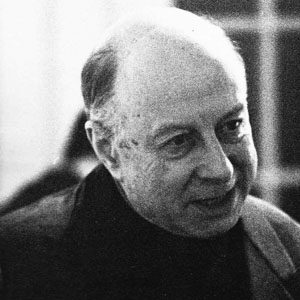 Master printmaker, born in Marseille, Max Papart learned the techniques of classic engraving in 1936 in Paris. In 1960, he added to the classic processes the technique of etching with carborundum invented by his friend Henri Goetz. In the years 1969-73 Papart taught printmaking at the University of Paris VIII-Vincennes. He made his own plates and supervised the hand printing of his prints.
Master printmaker, born in Marseille, Max Papart learned the techniques of classic engraving in 1936 in Paris. In 1960, he added to the classic processes the technique of etching with carborundum invented by his friend Henri Goetz. In the years 1969-73 Papart taught printmaking at the University of Paris VIII-Vincennes. He made his own plates and supervised the hand printing of his prints.
One of the most intriguing intellectual concepts which Papart achieves in his two-dimensional, semi-cubistic style is a “window” through which the viewer senses the past or future, or even another time or place. This development has become more pronounced since 1981 and in recent years it is seen even more graphically in such works as Circle, Indian Summer, Dreams, and Silent Woman. It has been said the Papart does not “paint,” he “composes.” His compositions come together in a symphony of line, shape and color.
Papart contends that he never attributes any specific meaning to his work. He feels that each painting has its own meaning and needs no interpretation from him. Papart’s paintings, in his own words, “force the viewer to think, and it is for the viewer to respond to the art based on his own personal experiences.”
Excerpted from “The Artist” by Kenneth Nahan, in “Max Papart, Master Prints and Other Works on Paper” published by the New Orleans Museum of Art.
#7. Edison / Mazda – Prometheus Framed Vintage Art Poster SOLD
31.5 x 18 / with frame 33.5 x 20
Artist: Maxfield Parrish (1870-1966)
#8 Split World – John Pitre signed artist’s proof
14.5 x 22 / with frame 25.5 x 34
SOLD
View Artist Bio
John Pitre
John Pitre (born 1942 in New York City) is an American visionary art painter based in Hawaii. He has been called the most bankable living American surrealist.[1]
One of John Pitre’s best known paintings is A New Dawn, a 1965 work which shows a modern human reduced to the status of a caveman in the midst of smoldering urban ruins. This painting, in the weeks after the September 11, 2001 attacks more than thirty five years later, was seen by some as a foreshadowing of what came to be known as the Ground Zero of those events.[2] In 2004, the owner of the original painting, which was valued in 1997 at $1.7 million, offered A New Dawn in trade for a £1 million house on the London real estate market.[1]
John Pitre’s art addresses issues such as ecology, overpopulation, responsibility for stewardship of the Earth, the quest to understand the mysteries of the universe, and the fragility of life and of relationships.[3] Posters of his paintings were very popular in the 1960s and 1970s[4] and one of them, a print of his painting Restrictions,[5] has sold several million copies.
John Pitre studied at the Art Students League of New York[6] and has lived and worked in Hawaii for three decades. With his wife Patricia, his ex-wife Ginette and their artist daughters Dawn Pitre and Tanya Joy, he is the proprietor of Pitre Fine Arts in Honolulu.
Inventions
Pitre is also an inventor.[4] Pitre invented the Range of Motion (ROM) and Time Works exercise equipment[7][8][9] which was rated the “Best of What’s new in 1993” by Popular Science magazine. With decorative tile artist Thomas Deir,[10] who was his apprentice at the time, Pitre co-invented Genesis Artist Colors,[11][12] a synthetic oil paint which remains wet and malleable until it is heat cured.
Pitre is also a diver,[13][14] an environmentalist,[15] the founder and director of Natural Power Concepts,[16] and pilots helicopters[17] and ultralight seaplanes.[18]
9, Edward J. Holslag – The Pilot Original Oil on canvas
1870 – 1924 American
23 x 28 with frame
16 x 19 1/2
SOLD
Artist Bio
#10. London / Man in tophat Artist: Ilona – Chalk SOLD
Longhorns in Field
Oil on Canvas Artist: Robert Payton Reid
20 x 15
SOLD
Artist Bio
Reid was a Scottish painter who lived from 1859 to 1945. He was born in Edinburgh and studied at the Royal Scottish Academy School in that city. He also studied in Munich and Paris He exhibited from 1880 to 1940, mainly at the Royal Scottish Academy where he exhibited 181 paintings. He is considered today to be one of the best Scottish Impressionist painters. He is listed in British Artists, Waters and the Victorian Dictionary.
Robert Payton Reid
1859-1945, Scottish, A.R.S.A.
Robert Payton Reid (1859-1945) was an Edinburgh-based painter and illustrator. After living in North Queensferry, Fifeshire, Reid returned to Edinburgh to hone his craft at the Royal Scottish Academy schools. From there he traveled to Munich, Germany and Paris, France in the 1880s. A member of the Royal Scottish Academy, Reid traveled extensively through Europe during his career. While renting an art studio in London he became friends with famous Pre-Raphaelite artist John William Waterhouse (1849 – 1917) , who influenced Reid’s style. Upon returning to Scotland, Reid was one of the founders of the Scottish Society of Artists. A sensitive man known for his shyness, nevertheless Reid was able to befriend other prominent artists of his day, including William Miler Frazer and Robert Noble. During the winter time, Reid frequented Monte Carlo, Monaco and Tangier, Morocco.
Reid’s expertise in painting landscapes, and nostalgic country scenes was masterful. His widespread travels across Europe ensured a sizeable number of dedicated patrons for his works during his lifetime.
Water Buffalo and Boy
Artist Mochizuki Gyokusen (1834-1913)
Mid 19th-early 20th century Meiji era
14 x 18 1/2 Framed
10 1/2 x 7 1/2
SOLD
Artist Bio
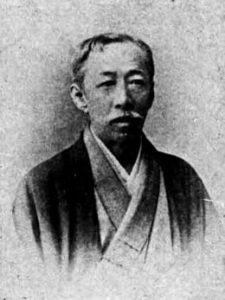 Mochizuki Gyokusen was born in Kyoto and studied under his father, Mochizuki Shigeteru. He was considered a major artist in the landscape and bird-and-flower (kacho-ga) tradition and worked for the Imperial Palace when he was barely twenty. In 1904 he was appointed a Teishitsu Gige-in (Artist to the Imperial Household) and became a member of the Art Committee of the Imperial Household. In 1880, he helped found the Kyoto Prefectural School of Painting. Many of his works won prizes and were exhibited in the Naikoku Kaiga Kyoshinkai, Naikoku Kangyo Hakurankai and the International Exposition in Paris. Another screen, depicting a wild boar, is in the National Museum in Tokyo. His most famous pupil was Kawai Gyokudo (1873-1957).
Mochizuki Gyokusen was born in Kyoto and studied under his father, Mochizuki Shigeteru. He was considered a major artist in the landscape and bird-and-flower (kacho-ga) tradition and worked for the Imperial Palace when he was barely twenty. In 1904 he was appointed a Teishitsu Gige-in (Artist to the Imperial Household) and became a member of the Art Committee of the Imperial Household. In 1880, he helped found the Kyoto Prefectural School of Painting. Many of his works won prizes and were exhibited in the Naikoku Kaiga Kyoshinkai, Naikoku Kangyo Hakurankai and the International Exposition in Paris. Another screen, depicting a wild boar, is in the National Museum in Tokyo. His most famous pupil was Kawai Gyokudo (1873-1957).
Water Buffalo and Boy
Artist Mochizuki Gyokusen (1834-1913)
Mid 19th-early 20th century Meiji era
Japan
Woodblock print ink and color on paper
Signed in black with red seal
21 x 12 1/2 Framed
14 x 6 1/2
Alejandro Romero
36 x 46 1/2 poster signed / not framed
Artist Bio:
Alejandro Romero: 1948—: Painter and muralist
At a Glance . . .
Born near Veracruz, Mexico, in 1948; grew up in Mexico City. Education: Studied art at Academy of San Carlos, Mexico City, 1967-71; also studied at Art School of Vincennes, the Artists’ Collective in Taos, New Mexico, and the Art Institute of Chicago. Religion: Roman Catholic.
Career: Worked for advertising agency and as freelance photographer, early 1970s; moved to Chicago’s Pilsen neighborhood, 1975; created first of more than 75 event posters shown in Chicago area, 1979; numerous group and individual exhibitions of paintings, 1980s and 1990s; works shown in Canada, England, Japan, and the former Yugoslavia in 1985 alone; active as muralist, 1980s–; sculpture of Virgin of Guadalupe installed, S. 9th and Washington streets, Milwaukee, WI, 2000.
Dragon SOLD
Artist S. Sturgil
Signed & Numbered
14 1/2 x 10
Abraham Lincoln Bust by Leo Cherene
Artist Bio
Vintage & Native American Jewelry
Turquoise, silver, mother of pearl
Jade & 18K gold
